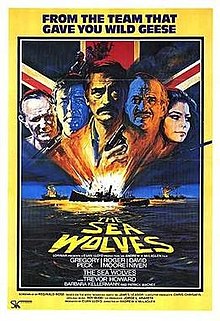
Aka Heroes Without Uniforms. We’ve run into a wolfpack. Merchant Marine sailors First Mate Joe Rossi (Humphrey Bogart) and Captain Steve Jarvis (Raymond Massey) survive the sinking of SS Northern Star by German U-boat U-37 en route from Halifax. After 11 days drifting they are rescued. Steve spends time with his wife Sarah (Ruth Gordon), while Joe meets and marries singer Pearl O’Neill (Julie Bishop). At the union hall, merchant seamen, including the Northern Star survivors, spend their time waiting to be assigned to a new ship. Over a round of poker, Johnnie Pulaski (Dane Clark) jokes about getting a shore job and reveals his fear of dying at sea. The others shame him into signing along with them on another ship. Alfred “Boats” O’Hara (Alan Hale, Sr.) is tracked down by his wife, who has apparently not seen him since he was rescued. She angrily serves him with a divorce summons. O’Hara, knowing he is headed back to sea, gleefully tears it up, saying Them ‘Liberty Boats’ are sure well named! When they are charged with getting supply vessel Seawitch to Russian allies in Murmansk as part of a sea convoy and the group of ships comes under attack from U-37 again, Rossi and Jarvis are motivated by the opportunity to strike back at the Germans but now have to dodge Luftwaffe bullets too … For a sailor’s wife this war is just another storm. Tremendously exciting action adventure paying tribute to the men of the US Merchant Marine. The evocation of a group under pressure with their particular avocations and tics is expertly done and the characterisation is a model for war movies. There are all kinds of devices and diversions, from an onboard kitten and his successor; to envy of a Naval officer Cadet Ezra Parker (Dick Hogan); and the usual carping about the quality of the nosh. With a screenplay by John Howard Lawson (from a story by Guy Gilpatric) and additional dialogue by A.I. Bezzerides and W. R. Burnett you can be sure there are some riproaring lines: A trip to perdition would be like a pleasure cruise compared with what we’re going into. Wonderfully shot by Ted McCord with marvellous effects, you would never guess that this was shot on the studio lot due to wartime restrictions. Directed by Lloyd Bacon with uncredited work by Byron Haskin and Raoul Walsh. I’ve got faith – in God, President Roosevelt and the Brooklyn Dodgers – in the order of their importance!








